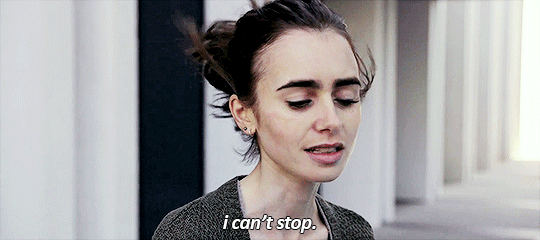This Netflix movie took me by surprise.
I'm not sure what I was expecting, but I didnt expect such a heartfelt and resonant exploration of a young girl's journey.
Sure, it had its faults. Eating disorders are complex and take many shapes and forms, not just that of a waif-like Lily Collins wrapped in ponchos and oversized cardis. We had a young man and a woman of colour and some young people who were decidedly unwaiflike, but the main focus was still the apparent glamour of Collins and her prominent ribcage. And don't get me started on the reasoning behind the casting of Keanu Reeves. His benign bearded patriarch seems to abandon his mostly female charges to the ambivalent care of the nursing staff.
But still, it touched me.
The film reveals Ellen's parents as neglectful, perhaps narcissistic, definitely self-absorbed and focussed on their own internal explorations and "personal growth" in the way of Californian baby boomers. Ellen's own existential crisis culminates in a decision, not to die, as we might have feared , but to live, as challenging as that seemed to be for her. On a long dark night (of the soul) she wanders in the desert (religious metaphors notwithstanding) and is surprised to be alive at dawn. She arrives at what becomes for her a conscious choice rather than the unexamined, titrated suicide of anorexia.
Writer Marti Noxon based To the Bone on her own ten year battle with anorexia.
"I kinda left my body one time. It’s a crazy story," Noxon says. "I was hovering over my bed and I saw myself. And I could see that I needed help. It was the only time that I had compassion for that body. I was like, 'Somebody has to help her.' I was on the brink. I had had palpitations that day. I was very ill and the next thing I knew I was on a tunnel, heading toward a light, and I had this kind of awareness that it wasn’t my time. I chose to come back."
Only in seeing herself from a different perspective can she acknowledge the reality of her emaciated body and experience self-compassion. Like the semi-fictional Ellen, she makes the conscious decision to come back and live.
The most striking sequence in the film is the primal"refeeding" scene. In a startling and unexpected living pieta, Ellen's mother (encouraged by her therapist) cradles her daughter in her lap and offers her a bottle of warmed and (heavily symbolic) milk. It should have been mawkish, or embarrassing.
Strangely, and against all the odds, it works.
Perhaps it was a testament to the commitment of both actresses, but I found it both moving and resonant. It brought me back again to Charles Stewart's Jungian exploration of eating disorders and his argument that strong feelings and intense negative emotions ingested with food in infancy can lead us to lose touch with both hunger and satiety. And I wondered how this maternal refeeding might look in comparison with the clinical detachment of hospital refeeding with its IV lines and sacs of calorific fluids.
As I stayed with the image, I thought that, yes, this mother (albeit through the intercession of her therapist) is prepared to acknowledge the shortfalls in her early relationship with her daughter.
That is a good start.
To want to repair, to be prepared to take the steps and to do the actual work of repairing, tells us that she wants to be there for her daughter in the here and now, despite their difficult history. Her daughter's deliberate decision to live makes her able to accept this gesture, although it is perhaps an imperfect one.
We know, in the end, that they will be OK.
If you are worried about your own eating, thoughts or behaviours or if you are concerned for your child, schedule a free initial phone consultation here:
Find out more about my approach to anorexia.










